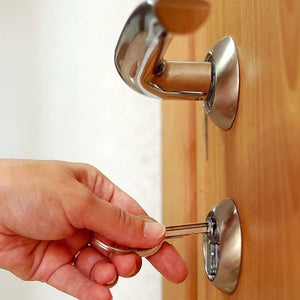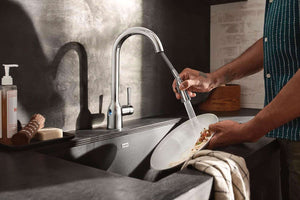
The Ultimate Guide to Replacing Double Latch Sliding Door Locks
Ensuring the security of your home is paramount, and having a sturdy double-latch sliding door lock is a critical component of safeguarding your living space. If you're faced with a faulty or outdated double-door sliding lock, it's essential to tackle the replacement process confidently. Whether dealing with a malfunctioning lock, upgrading your security measures, or simply seeking a fresh look, this comprehensive guide will provide step-by-step instructions on replacing a double-latch sliding door lock. We will cover everything from understanding the types of locks available to the installation process, ensuring you are well-equipped to tackle this project confidently.
Understanding the Double Hook Mortise Lock Mechanism

Before diving into the replacement process, let's clarify a double-hook mortise lock. This type of lock is commonly used in double sliding glass door locks due to its robust mechanism that includes two hooks (the "double hook") that engage with the door frame, providing a high level of security. The "mortise" part of the name refers to the pocket or recess within the door where the lock is fitted.
What Are The Different Types Of Double Latch Sliding Door Locks?
Several different types of double latch sliding door locks are available in the market. Here are a few popular options:
Cylinder Locks
These locks consist of a cylinder mechanism that requires a key to operate. They are commonly used in sliding doors and provide high security.
Mortise Locks
Mortise locks are built into the door frame and require a key. They are known for their durability and reliability.
Hook Bolt Locks
Hook bolt locks have a hook-shaped bolt that latches into a strike plate, providing a secure locking mechanism. They are often used in conjunction with other locks for enhanced security.
Patio Door Locks
These locks are specifically designed for sliding patio doors. They usually contain a bar or bolt that slides into a track to secure the door.
Keyed Patio Door Locks
These locks have a key-operated mechanism that prevents the door from sliding open. They are commonly used in residential settings.
Thumb Turn Locks
Thumb turn locks have a thumb-operated mechanism instead of a key. They are easy to use and provide convenience while maintaining security.
Multi-Point Locking Systems
These locks engage multiple points around the door's perimeter, providing enhanced security. They often have hooks, bolts, or pins that secure the door at various points.
Choosing a sliding door lock that suits your specific needs and offers your property's desired level of security is essential. Consider factors like durability, ease of use, and compatibility with your sliding door before choosing.
Gathering The Necessary Tools And Materials
Replacing a double latch sliding door lock may seem daunting, but it can be a relatively straightforward process with the right tools and materials. Here are the necessary items you'll need to gather before getting started:
- New lockset: Purchase a new double latch sliding door lockset that matches the measurements and specifications of your existing lock. Make sure to choose a high-quality lockset that offers enhanced security features.
- Screwdriver set: A set of Phillips and flathead screwdrivers will be necessary for removing the screws that hold the old lockset in place and installing the new one.
- Drill (optional): Depending on the design of your sliding door, you may need to use a drill to create holes for the lockset installation. Check the instructions provided with your new lockset to determine if drilling is required.
- Measuring tape: Use a measuring tape to ensure the new lockset aligns appropriately with the existing holes on your sliding door. Accurate measurements are crucial for a seamless installation.
- Pencil or marker: Use a pencil or marker to mark the spots where you'll need to drill new holes or make adjustments to ensure proper alignment of the lockset.
- Screws: Check the packaging of your new lockset to see if it includes screws. If not, make sure to have a variety of screws on hand that are suitable for the material of your sliding door.
- Lubricant: It's a good idea to have some lubricant, such as silicone spray or graphite powder, to ensure smooth operation of the lockset.
- Safety goggles and gloves: Protect your eyes with safety goggles and wear gloves to prevent injuries while handling tools or sharp objects.
- Step ladder or stool: If your sliding door is higher off the ground, you may need a step ladder or stool to comfortably reach and work on the lockset.
- Assistant (optional): While not essential, having an extra pair of hands can make the installation process go more smoothly, especially when aligning and securing the lockset.
Before you start the replacement process, read through the instructions provided with your new lockset carefully. This will ensure that you clearly understand the steps involved and any specific requirements for your particular lockset model.
Conclusion
Replacing a double latch sliding door lock may initially seem daunting, but it can be a straightforward process with the proper knowledge and tools. By understanding the different types of locks available, gathering the necessary tools and materials, and following the step-by-step instructions for removing the old lock and installing the new one, you can successfully replace your double latch sliding door lock. Remember to adjust and fine-tune the lock for optimal functionality. By replacing your lock correctly, you can enhance the security and convenience of your double doors.



